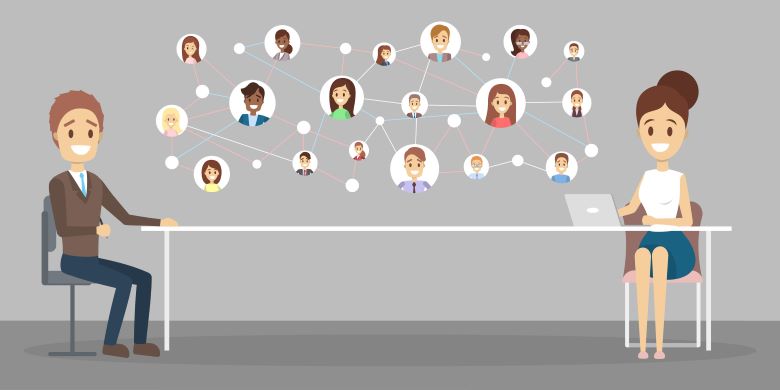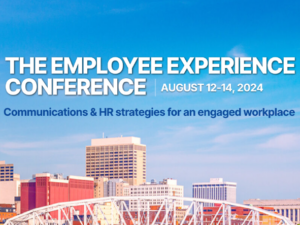Busting 4 remote employee engagement myths
Traditional engagement tactics are no longer working. Here’s what you can do to maintain productivity, morale and motivation amid the ongoing pandemic.

We won’t debate which is more productive, in-person or remote work.
There are benefits to both, and it’s situational depending on the type of work, company culture, and behavior of the individual employees. Some people are more efficient at home, and some are more effective in the office. There is no wrong answer.
You can have all the virtual coffee hours and “home office tours” you want, but working from home simply isn’t the same as being in the office. Are these lighthearted events good to do? Of course. Do they solve remote employee engagement? Not really. Employee engagement has nothing to do with virtual coffee hours.
My rule is if the activity is on the office calendar, it’s work. Whether it’s a “Coffee Connection” or a “Town Hall Meeting” doesn’t matter; you are asking employees to log in, gaze into a screen, and listen to the people they likely have interacted with this week already. It doesn’t have the same impact or personal connection as being in-person. That’s why virtual meetings tend to fall flat.
Let’s come at this problem from a different angle: Could it be that you can better engage remote employees by keeping meetings to a minimum, maintaining open and honest communications between teams and managers, and focusing on employee health and wellness?
Here are several myths to dispel as you strive to reach employees amid ongoing COVID-19 disruptions:
Myth: More communication channels lead to higher productivity.
We’ve all had back-to-back meetings in the office. And now there are even more back-to-back virtual meetings. Both can be exhausting, but remote meetings can be even more draining. That’s why “Zoom Fatigue” is a thing.
And since we don’t see each other doing work when we are working from home, we tend to send more meeting requests. Having our meetings spread throughout the day, plus “always on” email and chat communications causes productivity to plummet. Studies show that even brief mental reboots created by shifting between tasks can cost as much as 40% of someone’s productive time.
Good working habits are structured, and structure should be taught and encouraged.
To get work accomplished, we have to communicate with others, process information, and make concentrated efforts to complete tasks and projects. These cannot all be done at the same time, so make blocks of time for each. Set two or three short blocks per day for communications processing, which includes email processing, work scheduling, and/or chat channel catch-up.
Set a daily block or blocks for collaboration time when you can take or attend meetings, work with others, or respond to instant messages. Then set another block or blocks for concentrated efforts. When inside a time block, turn off other message notifications and practice blocking everything else out.
To limit meetings, establish a cadence. One meeting per day is optimal, but some days will have two. Set up daily, weekly, monthly and quarterly meetings. Daily meetings should be short and for small collaborative working groups. All weekly, monthly and quarterly meetings should have specific agendas, and everyone required to attend should have something to share, unless it’s a presentation.
Giving employees permission to support such structure can help make a huge difference:
- Emails and chats (unless you are in a collaborative block) don’t need to be responded to immediately; within four business hours is acceptable.
- It’s OK to block off time to focus on your health and wellness. Whether it’s a lunch break or meditation time, if it’s on the calendar, it’s your time.
- It’s OK to decline meetings when you don’t believe you are a contributor (best to converse with the meeting coordinator).
- Set boundaries and expectations for flex time, and trust people to adjust their working hours.
- It’s OK to set a “do not disturb” message on your communication apps.
The specific implementation of these ideas depends on the culture of the company, but communicating your expectations, setting boundaries, and giving permission shows you are serious about employee mental health and protecting their time.
Myth: Transparency in the workforce leads to more problems.
Employee engagement starts with an employee’s relationship with their manager and ends with the colleagues on their team. We all need friends at work. When team members and their managers are open and honest with one another, they can provide recommendations such as: “You really need to take a vacation as soon as possible.”
It might seem small, but this leads to a more productive and happier workforce.
If you’re an experienced executive or a strong leader, you know you need honest input and feedback in order to make good decisions. It helps to hear both sides of an argument. Successful managers strive to specifically show their team that transparent, open communication is rewarded, not reprimanded.
In some situations, team members may not feel comfortable sharing such information for fear of retaliation. In others, people mistake being honest with being rude or insulting. Tread carefully. It helps to model the behavior you want and to reword statements when necessary to diffuse tensions. It’s helpful to put an emphasis on facts and evidence over opinions.
It’s important to create an environment where people can disagree, argue, and end the discussion while still feeling good about working together. Engineers tend to be more blunt and more open to critical arguments. Creatives may be less assertive but often contribute valuable perspectives. Good managers learn their team’s personalities and strive to bring out their best.
Here’s how to facilitate an open, candid manager to colleague conversation:
- Create a monthly recurring meeting with each staff member called a “wellness check” or “one-to-one.” This meeting is between the manager and their staff, with the only purpose being to discuss how the employee is doing and feeling, and have a feedback forum for improvements.
- It’s a two-way meeting. One person shouldn’t be sharing everything while the other one just listens. Ideally, each person talks for half the time and listens for the other half.
- Focus on a single question: “How are you doing, really?” Saying “really” is the important part. What you’re not looking for is the “I’m doing good” statement that we’re all used to. It’s important to encourage honest, human-to-human expression.
- As best as possible, keep constructive or negative feedback out of this conversation. The intent is not to hold a “how can I/you do my/your job better” meeting. The goal of this meeting is to understand the other person’s mental wellness and emotional balance.
Myth: Wellness is all about physical health.
Employee engagement fails when individuals become disconnected due to anxiety, stress, and feeling overwhelmed or overworked without anyone to rely on. Dentists are reporting more patients with cracked teeth during COVID-19 because more people are grinding their teeth due to stress. It’s difficult to “feel” if someone is stressed on a Zoom or Teams call.
As a result of the lockdown response to this pandemic, work is socially distanced. We no longer see or socialize with our friends at work, and because we are isolated, we are less engaged in our work-life, which can lead to spiraling productivity. This makes mental health a top priority, and your organization must take an active role in promoting mental health wellness by prioritizing transparent and authentic communications programs.
There are multiple ways to do this. And it all revolves around trusting your employees. Without trust, you will make no progress:
Sign-up for a telehealth or virtual mental health program. Give your team members access to talk to a mental health counselor privately and confidentially. Also, regularly encourage them to use this available resource. When you can, sharing success stories helps to eliminate any stigma.
Conduct monthly “check-up” polls. You may want to modify your annual engagement surveys by rewording no-longer appropriate questions or adding new ones specific to a remote work environment. Adding monthly pulse surveys can help obtain more actionable immediate term feedback by consistently asking three or four questions to get a pulse on how your workforce is doing. Use this feedback to identify trends for deeper dives or corrective actions.
Make “wellness” a trackable metric. You can use one of many wellness apps such as Limeade or Virgin Pulse.
Whether in the office or at home, it’s in your company’s best interest to have happy, healthy employees.
Myth: Being an all-remote company automatically makes you more productive.
Some studies say that remote working leads to less turnover, and some say that it leads to higher productivity. Some companies, such as Twitter, have even become “forever remote” companies. Now, I’m not saying I disagree with these studies, but I do think it’s all contextual to the culture of the company and how prepared they are for a remote workforce.
You can’t just go remote and expect a more productive workforce. It takes work. In the end, we are social creatures. Most people enjoy human interactions and working together to accomplish things with a positive vibe. So yes, working remotely means mostly missing out on these things and on “water cooler” talk and other great, random in-person interactions.
So let’s not try to artificially recreate them. Instead, let’s encourage better work habits and improve communication. Allow room for engagement to evolve by sharing common goals, communicating worthwhile contributions, and discovering new connections. And yes, this works for in-person and remote work environments.
Michael DesRochers is CEO of PoliteMail. This article is in partnership with PoliteMail.







An open office culture brings along with it a lot of power of accountability on the part of the employees. Find out from this article how this can be fostered at the workplace! https://www.peoplehum.com/blog/power-accountability-open-office-culture
I thought this was a great article that tackled some important misconceptions about remote work. As more and more organizations move towards a distributed workforce, it’s crucial that we continue to address these myths and create a more inclusive and supportive remote work environment. Thanks for sharing your insights!